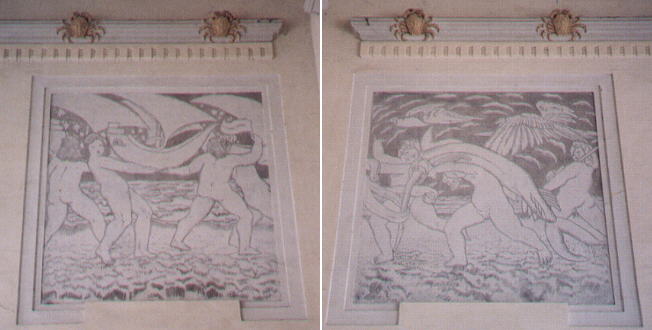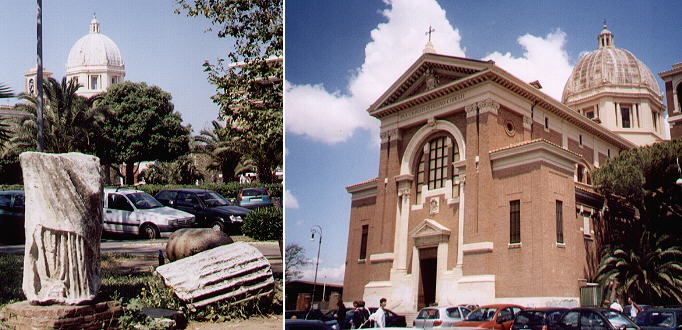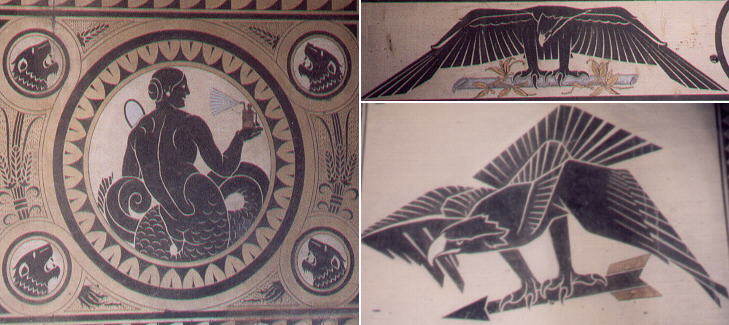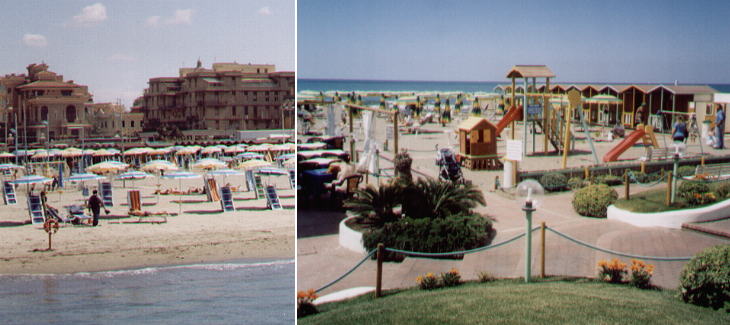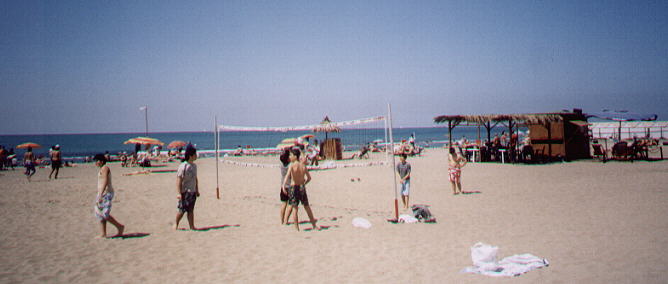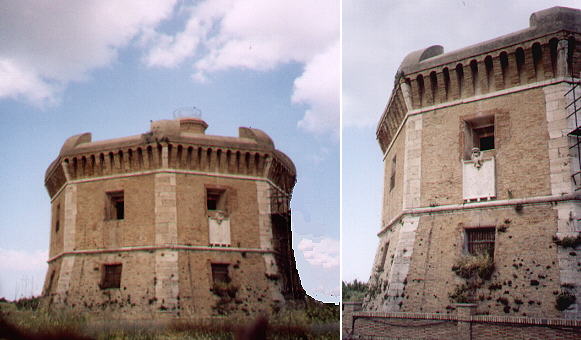 
Days of Peace (how to spend a peaceful day in Rome)  Lido di Ostia Lido di Ostia
Fascism is known as the archetype of a nationalist and aggressive dictatorship. The first years of Mussolini's
government (he became Prime Minister in 1922) however were marked by a greater attention to domestic issues rather than foreign
policies. One of his biographers (Paolo Monelli) called this period Mussolini piccolo borghese where piccolo borghese is a
reference to the emerging middle class in post WWI Italy.
The basic idea behind the development of the new beach was that the Romans would have their summer vacation at the sea ... staying home and travelling every day back and forth from Rome to Lido di Ostia. For this purpose a fast electric railway was completed in 1924 near Porta S. Paolo: the circle line tramway made this location within easy reach from all parts of Rome. The decoration of the railway station gave travellers an anticipation of the joys of their day at the beach.
Although at the time of Ancient Rome the coastline was closer to Ostia and the area of the current beach was under water, nevertheless the gardens of Lido di Ostia were decorated with some ruins to give them a "touch of class". A monumental church allowed those who had left home in a hurry to attend Sunday mass before going to the beach and maybe have an occasion to sin again.
The main building of Lido di Ostia was decorated with several elements of the nationalist rhetoric Fascism was in the process of developing (Roman eagles, she-wolves, arrows), but these were contradicted by other references to much more domestic and middle class desires.
Today Lido di Ostia is a large residential quarter still part of the municipality of Rome, but the Romans continue to go there on a daily basis using the electric railway: bathing establishments have special rate arrangements with companies and public offices and during the week most mothers go there with their children and continue, at the beach, the social life they pursued in Rome.
Some sections of the beach with limited facilities can be freely accessed. In recent years a very long free beach has been opened to the public south of Lido di Ostia. It belonged to a summer residence of the President of the Republic. People used to trespass through holes in the fence and the beach became known as il Buco (the Hole): it was not a beach for families to say the least. In the end a minor section was retained by the Presidential residence and it was better guarded while the major part of the beach was opened to the public: it is divided into two sections: one known as i cancelli (the gates) is a sort of expansion of the free beaches of Lido di Ostia; the other, known as Capocotta, caters for gays and naturists.
Lido di Ostia borders on the north with the Tiber: here at the mouth of the river (today a few hundred yards inland) Pius IV decided to build a tower to serve as an early warning of the arrival of corsairs. Its design is attributed to Michelangelo although we know for sure it was completed by Nanni di Baccio Bigio in 1568 when Pius V had already replaced Pius IV. Note: the photos of the beach were taken in May. Other Days of Peace pages: At the Flea Market A Sunny Day in Villa Borghese Voicing Your Views and feeling better! Eating Outdoors A visit to Roseto di Roma Christmas in Rome Celebrating the Foundation of Rome The procession of La Madonna de Noantri Finding Solace at the Protestant Cemetery
Go to my Home
Page on Baroque Rome or to my Home Page on Rome
in the footsteps of an XVIIIth century traveller.
|
All images © 1999 - 2004 by Roberto Piperno. Write to romapip@quipo.it (alternative e-mail address at romeartlover@katamail.com)
